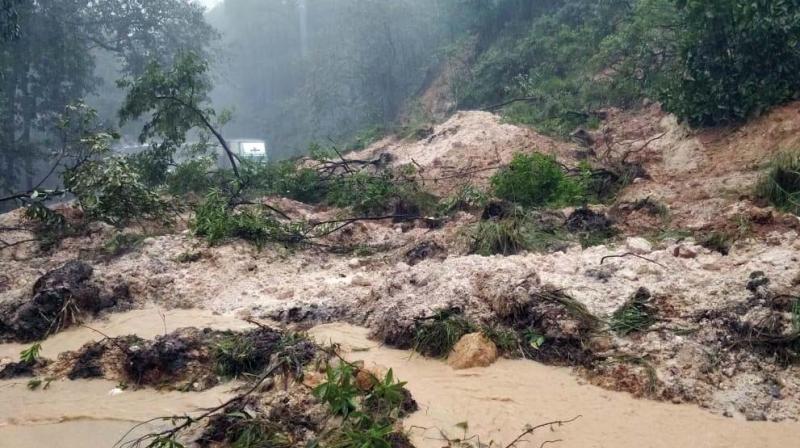Hassan: Landslides? Blame it on the soil
NHAI official said the professor would later come up with long term measures to prevent landslides after studying the lithomargic clay.

Hassan: Officials of the National Highways Authority of India (NHAI), Bengaluru, who were perplexed by the repeated landslides in the recent rain at two points near the rail-over- bridge (RoB) at Sakleshpur in Hassan on National Highway-75, have got the answer from geologists, who blame the lithomargic clay of the Malnad and the coast for them.
Geologists, who have studied lithomargic clay, also called shedi soil, say it is safe until it remains dry, but on exposure to water weakens drastically, leading to landslides and slope falls. " Lithomargic clay is very fertile, but it is water sensitive and in heavy rain it can cause landslides," they explain.
The geologists plan to dispatch the samples collected from the core area of the landslides for a closer study to professor T G Sitharam of the department of civil engineering , Indian Institute of Science, Bengaluru, who examined the two landslide points in Sakleshpur on Tuesday.
Prof. Sitharam has for the time being suggested that the NHAI should divert rain water to the nearest valley from the hills through drains to stop it from running down the eroded slopes and causing landslides.
A NHAI official said the professor would later come up with long term measures to prevent landslides after studying the lithomargic clay. A number of landslides have been reported in Madikeri, Hassan and Chikkamagaluru districts in the Malnad these monsoons, giving rise to serious concern among the authorities as they are not only holding up rail and road traffic, but also placing people in grave danger.

